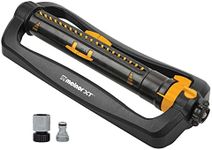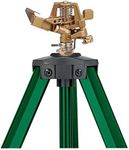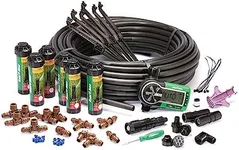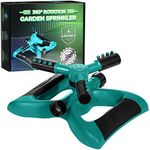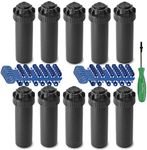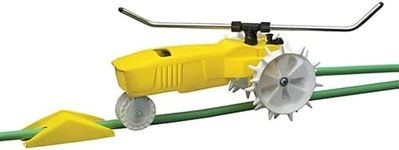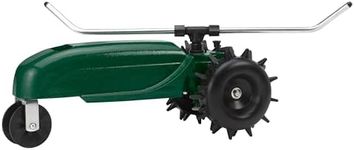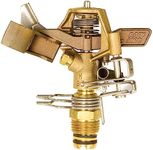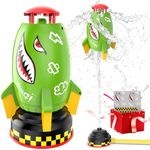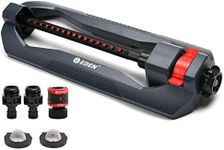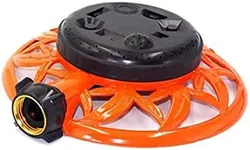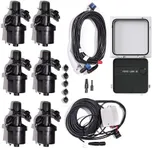Buying Guide for the Best Yard Sprinklers
Choosing the right yard sprinkler can make a significant difference in maintaining a healthy and lush lawn. The right sprinkler will ensure that your yard gets the appropriate amount of water, evenly distributed, without wasting resources. When selecting a yard sprinkler, consider the size and shape of your yard, the type of plants you have, and your watering needs. Here are some key specifications to help you make an informed decision.Sprinkler TypeSprinkler type refers to the design and mechanism of the sprinkler, which affects how water is distributed. Common types include oscillating, rotary, stationary, and impact sprinklers. Oscillating sprinklers are ideal for rectangular areas, rotary sprinklers work well for circular patterns, stationary sprinklers are best for small, fixed areas, and impact sprinklers are suitable for large areas with adjustable patterns. Choose a type that matches the shape and size of your yard for efficient watering.
Coverage AreaCoverage area indicates the maximum area a sprinkler can water. This is usually measured in square feet. Small yards may only need a sprinkler with a coverage area of up to 1,000 square feet, while larger yards may require coverage of 3,000 square feet or more. To pick the right one, measure your yard and choose a sprinkler that can cover the entire area without needing to be moved frequently.
Water Pressure RequirementsWater pressure requirements refer to the amount of water pressure needed for the sprinkler to operate effectively. This is typically measured in pounds per square inch (PSI). Most residential water systems provide between 30-50 PSI. Ensure that the sprinkler you choose can operate within the range of your home's water pressure. If your water pressure is low, look for sprinklers designed to work efficiently at lower pressures.
AdjustabilityAdjustability refers to the ability to change the direction, range, and pattern of the water spray. This feature is important for customizing the watering to fit different areas of your yard. Some sprinklers allow you to adjust the spray angle, distance, and pattern, which can be useful for watering irregularly shaped lawns or specific garden beds. Choose a sprinkler with the level of adjustability that matches your yard's layout and your watering needs.
DurabilityDurability refers to the sprinkler's ability to withstand regular use and exposure to the elements. Sprinklers made from high-quality materials like metal or heavy-duty plastic tend to last longer. Consider the climate in your area and how often you plan to use the sprinkler. If you live in an area with harsh weather conditions or plan to use the sprinkler frequently, opt for a more durable model to ensure longevity.
Ease of UseEase of use encompasses how simple it is to set up, operate, and maintain the sprinkler. Look for features like easy-to-connect hose fittings, intuitive controls, and minimal maintenance requirements. If you prefer a hassle-free experience, choose a sprinkler that is straightforward to use and doesn't require complex adjustments or frequent cleaning.

